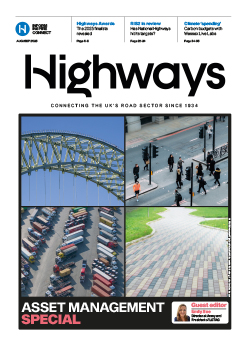The Department for Transport has published the draft third Road Investment Strategy (RIS 3) for National Highways, broadly setting out almost £25bn of spending from 2026-2031.
The RIS 3 is set to have a total funding envelope of £24.98bn; it will also delay the zero harm target for England's national network from 2040 to 2050 and could see a change to National Highways' approach to designated funds.
A much-expected focus on 'maintenance and renewals' was also confirmed in the draft document.
Transport secretary, Heidi Alexander said: 'Safety, customer service and delivery will remain the cornerstones of the way the SRN is managed. RIS3 will also build on work started in RIS2 to ensure that through a long term focus on maintenance and renewals, the network remains safe and fit for the future.'
The draft RIS3 sets out 'a high-level vision for the network' with key performance indicators and the balance between capital and revenue due to be confirmed with the publication of the final RIS by March 2026.
Before then, National Highways is due to publish a draft strategic business plan by 1 September, and the national monitor, the Office of Rail and Road, is due to publish an efficiency review by 30 November 2025
RIS3 will include a full suite of performance metrics under the same six outcome areas as RIS2:
- Improving safety for all
- Fast and reliable journeys:
- A well maintained and resilient network
- Being environmentally responsible
- Meeting the needs of all users
- Achieving efficient delivery.
Safety
The draft RIS 3 appears to confirm that the Government and National Highways have quietly dropped a previously key road safety target. The ambition was to have no one killed or seriously injured on the SRN by 2040 - this target has now been pushed back until 2050.
'The Government will expect National Highways to prioritise specific routes where safety improvements for all road users are most pressing. This should be underpinned by the ambition to achieve zero harm by 2050, meaning that nobody should be killed or seriously injured on the SRN by that date,' the draft document states.
It adds that the Government supports the adoption of a 'safe systems' approach to address not only the infrastructure elements, but also through greater collaboration with the police and other stakeholders.
Focus on renewals
DfT officials said the Government is 'prioritising maintenance and renewals within RIS3 and elsewhere'.
'The increased renewals funding that will be provided through RIS3 will allow National Highways to improve the long-term condition of England’s strategic road network, to counter the risk of slower, less reliable journeys in the future.'
While funding constraints around major new projects and the need for greater climate resilience and adaptation play a part in this shift of focus, the Government also flagged up the importance of the ageing nature of the national road assets.
'A significant part of the SRN is now 50 years or older, was designed to operate in a more benign climates and carry less traffic. As the asset ages, it will need increased maintenance and renewals to remain in a safe, serviceable condition to meet current and future needs,' the draft RIS states.
Designated funds
While RIS 3 will maintain a designated funds elements - specific funding pots to target certain policy areas, for instance, safety, flooding or active travel - there could be a reform to the model.
Certain issues could be carved out of designated funds under new 'National Programmes' and be given much stricter targets attached to their spending.
'We are considering introducing new National Programmes to deliver defined outputs that support RIS objectives or commitments which are not within other programmes (for example, supporting specific programmes of activity around safety and environmental mitigation),' DfT officials said.
'These types of projects would have been funded via the Designated Funds in RIS1 and RIS2 but by making them distinct programmes we can more effectively monitor their delivery and outcomes.'
The core purpose of these National Programmes would be to provide 'a different delivery and funding model to complement the more flexible Designated Funds'.
There is also likely to be an increased focus on supporting housebuilding. The document notes that improved infrastructure would support 'the rapid delivery of much-needed housing capacity'.
It states that between 2018 and 2023, 'National Highways supported the development of 186,413 new homes and helped unlock land with the potential to deliver a further 392,000, working in partnership with Homes England'.
The Labour Government has targeted building 1.5 million homes over the Parliament and so is likely to ask for National Highways to match or improve upon this.






